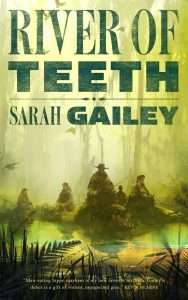Adrian Collins's Blog, page 63
March 12, 2024
Trials of Empire, The Art of War new hardcovers, new books & more in our interview with Richard Swan
Last Updated on March 13, 2024
Today I got to interview fantasy and science fiction author Richard Swan, author of Empire of the Wolf trilogy (The Justice of Kings, The Tyranny of Faith, and The Trials of Empire) and The Art of War trilogy (Reclamation, The Ascendancy War, Empire of the Fallen). Our conversation covered the wide range of SFF books in the works from Richard–with sci-fi, post-apocalyptic, and fantasy books all on the way. I like to think I managed to wrangle a few extra tid bits you may not have heard before!
Check out our latest interview with Richard SwanThe post Trials of Empire, The Art of War new hardcovers, new books & more in our interview with Richard Swan appeared first on Grimdark Magazine.
March 11, 2024
REVIEW: To Cage a God by Elizabeth May
To Cage a God is the latest adult fantasy offering from Sunday Times bestselling author Elizabeth May. It is a Slavic inspired fantasy steeped with gods, magic, and some romance. It has some dark elements which I think might appeal to the Grimdark Magazine crowd, and although overall I enjoyed reading To Cage a God, it is not one of my standout favourite reads of the year so far.
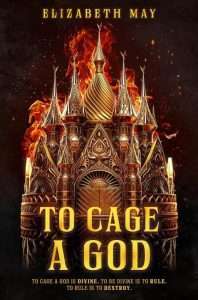 In To Cage a God our main focus is on two sisters, Galina and Sera, who as a result of their mother’s horrific experimentation on them as children, each now houses a violent god inside them. Both women are able to access their gods’ powers, but pay an increasingly higher price each time they do. Not to mention that this caging of gods is only meant to happen to the ruling classes so Galina and Sera are in a permanent fugitive state. Raised to be weapons in the revolution their mother planned, now she is gone they must create their own rebellion to over through the Empress or die trying.
In To Cage a God our main focus is on two sisters, Galina and Sera, who as a result of their mother’s horrific experimentation on them as children, each now houses a violent god inside them. Both women are able to access their gods’ powers, but pay an increasingly higher price each time they do. Not to mention that this caging of gods is only meant to happen to the ruling classes so Galina and Sera are in a permanent fugitive state. Raised to be weapons in the revolution their mother planned, now she is gone they must create their own rebellion to over through the Empress or die trying.
Although To Cage a God is touted as a ‘romantasy’ novel, this seems a little unfair as any romantic relationships in the novel are secondary to the bond between Galina and Sera. Also, other than some yearning stares and flirtation, there are no intimate scenes until maybe the last quarter of the novel. The romantic storylines are important, but not the most important part of the plot in To Cage a God. The plan to infiltrate and overthrow the ruling class was my favourite aspect of the novel and it was this intrigue and tension which kept me reading. I also enjoyed the magical as I have never come across a similar magical system before, it felt new and also held my interest. It was also an easy read in terms of being able to dip in and out of. Pacing was good, chapters did not feel over lengthy, and although it was a multiple POV novel I was able to keep everyone straight in my head and move between the perspectives with ease.
Unfortunately, the other parts of the novel did not give me that same feeling of finding something new. Tropes and clichés exist in writing for a reason, and May has used them well, but it gave the experience of reading To Cage a God a sense of predictability which tempered my excitement. We have the heroine fighting for the good cause and an anti-hero who is the embodiment of chaos and hates everyone expect for the heroine. There is a scarred and traumatised fighter giving it one last shot for the greater good. The hidden away princess, who is not quite kept in a tower, and the disgustingly wealthy nobility who live a life of luxury whilst the peasants starve.
I would say my overall experience with reading To Cage a God was a positive one. I liked the story, the characters, and it was a fun read. It may not have kept me up reading past my bed time, but I when I got to the end of the novel I did not feel like I had wasted my time by reading it. To Cage a God might not have pushed all of my buttons, but it might be a great read for someone else so definitely worth giving it a try if it sounds like it appeals. Thank you to Elizabeth May and the team at Daphne Press for sending me a copy of To Cage a God for review.
Read To Cage a God by Elizabeth MayThe post REVIEW: To Cage a God by Elizabeth May appeared first on Grimdark Magazine.
March 10, 2024
REVIEW: The Prisoner’s Throne by Holly Black
With the Stolen Heir duology, Holly Black takes us back to the fae realms of her Folk of the Air series. For those familiar with the series, The Stolen Heir and The Prisoner’s Throne are a spin-off, featuring Oak – the younger brother to Jude, heroine of the Folk of the Air books, and heir to the throne of Elfhame – and Wren, a mostly new character – the heir to the Court of Teeth. Wren, my feral child, is a brilliant addition to Black’s menagerie of complex, morally ambiguous characters. These novels are far darker than the reader would expect based on their packaging. This may be YA, but it is textbook grimdark as we understand it, and I mean this in the best way possible.
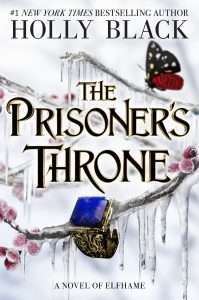 These books are strongly part of a series, so the reader will enjoy them more if familiar with the world. I read the Folk of the Air series a few years back and could spot the continuous references to their story but did not remember enough to be able to place some of them. The Stolen Heir duology would work fine as a standalone series – but the two books, The Stolen Heir and The Prisoner’s Throne are one story split over two. I would recommend the reader pick up both and enjoy the story in close succession. The Prisoner’s Throne picks up where The Stolen Heir ended, with Prince Oak the prisoner of Wren, paying for his betrayal. The court of Elfhame (Jude and Cardan, leads of the Folk of the Air series) is more than keen to get Oak back, no matter the cost. As war looms large, Oak and Wren both have their competing aims, desperation to keep family safe and reliance on subterfuge. The Prisoner’s Throne is a delicious series of betrayals, a reminder that the best of intentions do not always show a clear path forward.
These books are strongly part of a series, so the reader will enjoy them more if familiar with the world. I read the Folk of the Air series a few years back and could spot the continuous references to their story but did not remember enough to be able to place some of them. The Stolen Heir duology would work fine as a standalone series – but the two books, The Stolen Heir and The Prisoner’s Throne are one story split over two. I would recommend the reader pick up both and enjoy the story in close succession. The Prisoner’s Throne picks up where The Stolen Heir ended, with Prince Oak the prisoner of Wren, paying for his betrayal. The court of Elfhame (Jude and Cardan, leads of the Folk of the Air series) is more than keen to get Oak back, no matter the cost. As war looms large, Oak and Wren both have their competing aims, desperation to keep family safe and reliance on subterfuge. The Prisoner’s Throne is a delicious series of betrayals, a reminder that the best of intentions do not always show a clear path forward.
Oak and Wren are both fantastic leads, complex characters stubbornly insisting that they know everything worth knowing. Oak is the softer of the two, though he has been quietly manipulating the court at Elfhame for most of his life. He doesn’t know how to be honest, how to show vulnerability. He is your cocky pretty boy, except he does have a great mind for strategy and war. Wren, Wren my precious feral child, is a walking disaster. Navigating missing memories and cruel torture (one of the more memorable scenes in The Stolen Heir includes Wren being parted from her tongue), she’s never learned to trust people. She will go berserk for those she cares about – like her adoptive sister from Wren’s time living in the mortal world.
The shift between worlds worked really well in the Stolen Heir duology. Set largely in the fae realms, the mortal word functioned as a sort of background character development canvas. Through flashback and short scenes, the reader gets an impression of the characters’ lives, of who they are in different worlds. I am impressed with how well Black managed to show and not tell. The impact of circumstances in the different locations, even within the fae realms, was one of the strongest elements in these books. The characters are different people depending on where they found themselves. This makes the story feel all the more real, as I think we readers are all familiar with how we change depending on where we are and around which people. Just think about how easily we tend to fall back into childish patterns when we’re staying with family.
I thoroughly enjoyed my return to Elfhame and surroundings, and am curious to see what Black comes up with next. Her YA novels are cult classics for a reason, and we get to enjoy a queen at the top of her game with The Prisoner’s Throne.
Read The Prisoner’s Throne by Holly BlackThe post REVIEW: The Prisoner’s Throne by Holly Black appeared first on Grimdark Magazine.
March 9, 2024
REVIEW: Bob the Wizard by M.V. Prindle
Bob the Wizard, the debut dark fantasy by M.V. Prindle, is a raucous ride featuring Robert Caplan, or Bob, as his friends know him. Bob is a chain-smoking recovering alcoholic, a foul-mouthed ex-garbage man from Texas who will stop at nothing to avenge his family’s death.
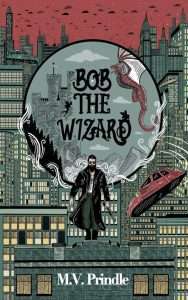 The novel opens with Bob in the aftermath of tragedy, his wife and son viciously murdered by a gray-skinned man known as Galvidon. Powered by nicotine and an unrelenting thirst for revenge, Bob chases the killer across the various worlds and slices of reality that make up the Astraverse, carrying nothing but a backpack, a pistol, and an enigmatic object called the Gatekey. This solar-powered Gatekey, which enables Bob’s world-hopping, had been gifted to him by a mysterious creature prior to his death. Somehow the Gatekey also seems to facilitate Bob’s communication with other intelligent beings wherever he goes.
The novel opens with Bob in the aftermath of tragedy, his wife and son viciously murdered by a gray-skinned man known as Galvidon. Powered by nicotine and an unrelenting thirst for revenge, Bob chases the killer across the various worlds and slices of reality that make up the Astraverse, carrying nothing but a backpack, a pistol, and an enigmatic object called the Gatekey. This solar-powered Gatekey, which enables Bob’s world-hopping, had been gifted to him by a mysterious creature prior to his death. Somehow the Gatekey also seems to facilitate Bob’s communication with other intelligent beings wherever he goes.
While Bob the Wizard features a fun cast of side characters, Bob himself steals the show. Grimdark readers will appreciate the complexity of Bob’s character: he is a deeply flawed protagonist, fighting addiction and emotional trauma while on a monomaniacal quest for vengeance. However, despite his gruff and imposing exterior, Bob has a heart of gold and learns much about himself along the journey, discovering his own powers and reevaluating his priorities.
M.V. Prindle writes with heartfelt intensity and strikes a great balance of emotions throughout Bob the Wizard. There is sadness, hope, anger, and an abundance of laugh-out-loud humor. Although Bob the Wizard also features plenty of action, there were some pacing issues in the middle part of the book. I think the story could be streamlined a bit to help maintain a more consistent pacing throughout the novel.
M.V. Prindle’s layering of science fiction and fantasy elements in his worldbuilding is quite brilliant. Bob the Wizard takes the opposite approach of many other sci-fantasy novels, which often incorporate science fiction elements within a fantasy world. Prindle turns this inside-out in his debut, creating an entire fantasy world within a sci-fi multiverse framing device. The world features plenty of fantastical beasts and humanoid races, including faeries, blue elves, and lizard people. We also learn many details about the Astraverse itself, especially in the latter part of the novel.
Overall, Bob the Wizard is an exhilarating and wildly creative tale. M.V. Prindle is a natural storyteller, and I’m eager to see what his unbridled imagination will come up with next.
Read Bob the Wizard by M.V. PrindleThe post REVIEW: Bob the Wizard by M.V. Prindle appeared first on Grimdark Magazine.
March 8, 2024
REVIEW: The Blood Curse by Jessica A. McMinn
Jessica A. McMinn is completely on fire in the explosive second volume of her epic Gardens of War and Wasteland quartet. Darker, grander, richer, and filled with even more delicious emotional turmoil, The Blood Curse is simply everything you could ever wish for in a sequel, and then so much more.
 With most of the groundwork having been laid in The Ruptured Sky, this sequel just hits the ground running and keeps up a relentlessly captivating pacing the entire way through. McMinn masterfully eases the reader back into the story, immediately reminding us of just how dire the situation has become after all the thrilling events and revelations at the end of book 1. Second book syndrome? We don’t know her; The Blood Curse is a dangerously addictive page turner from start to finish.
With most of the groundwork having been laid in The Ruptured Sky, this sequel just hits the ground running and keeps up a relentlessly captivating pacing the entire way through. McMinn masterfully eases the reader back into the story, immediately reminding us of just how dire the situation has become after all the thrilling events and revelations at the end of book 1. Second book syndrome? We don’t know her; The Blood Curse is a dangerously addictive page turner from start to finish.
Whereas The Ruptured Sky mostly felt like Amika’s story to me, I really enjoyed how this sequel smoothly broadened the scope and struck a more even balance between all these wonderfully compelling POV characters. Not only did I get even more emotionally invested in all my favourite broken babes from book 1, but I was also pleasantly surprised to find some new intriguing side characters to adore in this second instalment. Especially the pirate Emanais stole the show for me, and I now demand a prequel (or maybe an entire spin-off series) about her, thank you very much!
Similarly to Krystle Matar’s Tainted Dominion series, this dark epic fantasy series is just filled with all kinds of deeply flawed, broken, and painfully realistic characters who you simply can’t help but root for. Their morally questionable actions might make you want to strangle them at times (especially looking at you, Kriah), but gosh… if they aren’t just beautifully and tragically human.
And it was not only the individual character growth that made this sequel shine for me, but also the development of all the beautifully complex interpersonal relationships. There were some brutally tragic backstory revelations and heartachingly touching reunions, which made this sequel just an unexpectedly wild emotional rollercoaster. Moreover, The Blood Curse is even more gloriously gay than its predecessor, and we finally got some long overdue and smoking hot steamy action between certain characters that both they and I had been desperately yearning for; and it was even more delicious than I could have hoped for.
Now, I will admit that the plot set-up in The Ruptured Sky wasn’t anything that particularly wowed me, but The Blood Curse really surprised me with some of the dark doors it opened. McMinn cleverly plays around with familiar tropes, such as prophecy, chosen ones, and a rising ancient evil force, and then puts some deviously dark twists on it. Amika’s struggle with the cost of her khe’thorla powers and Rei-Hai’s fight against his dark nature had me especially glued to the page and made this story much more nuanced than I had initially given it credit for.
As in The Ruptured Sky, there were still some plot beats that felt a bit rushed or convenient to me, but nothing to the point that it broke my immersion. McMinn just absolutely nails her vision, delivering a brilliant dark epic fantasy story that is somehow both comfortably familiar and refreshingly unpredictable. Broken chosen ones, enigmatic meddling gods, thrilling demon hunting action, brutally raw mental health representation, exciting seafaring adventure, and bittersweet emotional gut punches, The Blood Curse simply has it all.
If you haven’t yet started the Gardens of War and Wastelands series, I highly recommend getting a taste of all the exquisite beauty and heartbreak this series has to offer with either of the two prequel novellas that McMinn offers for free to her newsletter subscribers; I promise you won’t regret it.
Thank you to the author for providing me with an eARC in exchange for an honest review. All opinions are my own. The Blood Curse is scheduled for release on March 30, 2024.
Read The Blood Curse by Jessica A. McMinnThe post REVIEW: The Blood Curse by Jessica A. McMinn appeared first on Grimdark Magazine.
March 7, 2024
REVIEW: The World-Maker Parable by Luke Tarzian
Luke Tarzian discovers truth in madness with The World-Maker Parable, an ingeniously constructed dark fantasy novella that feels like a nightmare brought to life. The World-Maker Parable serves as a prequal to Tarzian’s novel, Vultures, but can also be read as its own standalone story.
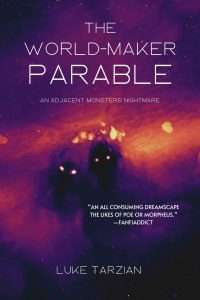 The novella opens with Rhona, a dutiful citizen of her country who leads her lover, Djen, toward execution in the corpse-laden Hang-Dead Forest. Djen has been sentenced to death for treason after unleashing the chaotic Vulture goddess, Luminíl, upon the world.
The novella opens with Rhona, a dutiful citizen of her country who leads her lover, Djen, toward execution in the corpse-laden Hang-Dead Forest. Djen has been sentenced to death for treason after unleashing the chaotic Vulture goddess, Luminíl, upon the world.
The Vulture goddess represents entropy unbounded, delivering irreversible disorder and destruction, culminating with certain death. The Vulture’s power is the opposite of the Phoenix goddess, Mirkvahíl, who signifies creation and rebirth.
The Phoenix goddess is sought by the other main point-of-view character, Varésh Lúm-talé, a notorious liar who seeks atonement for his sins. Varésh’s journey also brings him toward the Hang-Dead Forest as he uncovers truths about both himself and the Vulture goddess.
The World-Maker Parable is told on two timelines denoted “then” and “now.” I won’t say anything else about the plot of the novella, since I don’t want to spoil the myriad of surprises that Luke Tarzian has in store for the reader.
The dark, brooding atmosphere of The World-Maker Parable feels like a lucid dream. Tarzian’s prose is dense but engrossing. The author makes effective use of unreliable narration as he addresses issues of character identity and motivation, including one character who argues with a shadow twin. The novella is also bursting with a gamut of emotions. In the end, I realized that the title of the novella is meant to be taken quite literally.
The World-Maker Parable has an almost shockingly deep level of worldbuilding for such a short book. I thoroughly enjoyed the bird-inspired goddesses and their related lore of both creation and destruction. The thermodynamicist in me was delighted by both the Vulture goddess of entropy and the spirit of Equilibrium, who tries to maintain balance in the land.
Altogether, The World-Maker Parable is an impressive showcase for Luke Tarzian’s unbounded imagination and his ability to translate nightmarish visions into an unputdownable, emotionally rich story.
Read The World-Maker Parable by Luke TarzianThe post REVIEW: The World-Maker Parable by Luke Tarzian appeared first on Grimdark Magazine.
March 6, 2024
Anna Smith Spark: Where to Start Reading
Last Updated on March 7, 2024
Rightfully hailed as the queen of grimdark, Anna Smith Spark is the author of the Empires of Dust trilogy, which began in spectacular fashion with The Court of Broken Knives and continued with The Tower of Living and Dying and The House of Sacrifice. Anna published two new novels last year: the standalone grimdark fantasy, A Woman of the Sword, and the epic folk horror fantasy, A Sword of Bronze and Ashes. Her latest work is In the Shadow of their Dying, a grimdark novella coauthored with Michael R. Fletcher.
Anna Smith Spark’s writing has been described as “a masterwork” by Nightmarish Conjurings, “an experience like no other” by Grimdark Magazine, and “howls like early Moorcock, converses like the best of Le Guin” by The Daily Mail. She’s aspie, dyslexic, and dyspraxic; a former English teacher, petty bureaucrat, and fetish model with a BA in Classics, an MA in history, and a PhD in English Literature.
Those new to Anna Smith Spark often ask the best place to start reading her work. While there is no right or wrong answer to this question, in this article I offer my personal recommended reading order for Anna Smith Spark’s canon of literature.
1. In the Shadow of their DyingIn my opinion, the best place to dip your toes in the murky water of Anna Smith Spark’s writing is In the Shadow of their Dying, the grimdark fantasy novella coauthored with Michael R. Fletcher.
 Tash is the third-best assassin in a city under siege, within a week of being conquered by an invading army. Although there is not much demand for assassins in the midst of all-out war, Tash is hired by a mercenary leader, Pitt, to end the siege by killing their own king and fleeing the city toward the safety of the south.
Tash is the third-best assassin in a city under siege, within a week of being conquered by an invading army. Although there is not much demand for assassins in the midst of all-out war, Tash is hired by a mercenary leader, Pitt, to end the siege by killing their own king and fleeing the city toward the safety of the south.
But Tash encounters an unexpected problem when he crosses paths with a demon, Iananr the Bound One, occupying a woman’s body. Iananr thrives on blood and destruction and has sworn to defend the king in order to maximize bloodshed. But what Iananr really desires is freedom from her bondage.
Michael R. Fletcher and Anna Smith Spark’s unique voices both shine in alternating point-of-view chapters. Fletcher holds nothing back with his fierce prose and incisive humor. Anna Smith Spark shines with the voice she has given to Iananr. Her writing is so darkly poetic, with a rhythmic cadence that I couldn’t help but read aloud.
In the Shadow of their Dying is a masterclass in grimdark fantasy from two of the most distinguished authors in the genre. This is an expertly crafted novella, featuring some of the most vibrant writing and character work from both Michael R. Fletcher and Anna Smith Spark. In the Shadow of their Dying is a must-read for grimdark fans everywhere.
Read my complete review over on our partner site Beforewegoblog, here.
2. A Woman of the SwordAfter completing In their Time of Dying, I recommend following up with A Woman of the Sword, a heart-wrenching standalone grimdark fantasy that presents a brutally honest depiction of depression and the struggles of motherhood.
 Lidae is a soldier in a male-dominated world engulfed in civil war. She is also a widowed mother of two boys, Ryn and Samei, who are too young to understand the permanence of death. When their village is burned to the ground by enemy soldiers, Lidae finds that protecting her children from violence requires a ferocity of her own.
Lidae is a soldier in a male-dominated world engulfed in civil war. She is also a widowed mother of two boys, Ryn and Samei, who are too young to understand the permanence of death. When their village is burned to the ground by enemy soldiers, Lidae finds that protecting her children from violence requires a ferocity of her own.
For Lidae, the physical and emotional tolls of the soldiering life are compounded by the expectations placed on a young mother. Anna Smith Spark incisively highlights the sexism faced by mothers who choose to pursue a career or their own individual passion:
A Woman of the Sword presents a devastatingly authentic portrait of depression, including both the inner anguish and its impact on loved ones. Lidae never feels that she is good enough and, despite her best efforts, cannot feel the joy of motherhood as her mental state spirals downward into overwhelming anguish. Her grief and traumatic experiences leave open wounds that never seem to heal.
A Woman of the Sword is a tragic masterpiece. Anna Smith Spark writes with fierce intensity and deep sincerity. Her well-honed, fragmented writing style perfectly captures Lidae’s shattered emotional state, reflecting more broadly the struggles of parenting and especially of motherhood.
Read our complete review here.
3. The Court of Broken KnivesAnna Smith Spark’s debut novel, The Court of Broken Knives, established her as the queen of grimdark, and for good reason. This is grimdark fantasy of the highest caliber, with four complex lead characters in a bleak and cruel world.
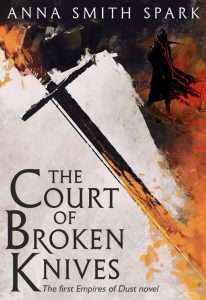 Tobias is a grizzled mercenary fighter leading his crew across the desert toward the legendary city of Sorlost, capital of the greatest empire the world has ever seen. Marith is a charismatic but dangerous new recruit in Tobias’s company, with plenty of secrets in his troubled past. Meanwhile in Sorlost, the nobleman Orhan is scheming to overthrow the Emperor and install himself as ruler, and the high priestess Thalia seeks escape from her life of isolation.
Tobias is a grizzled mercenary fighter leading his crew across the desert toward the legendary city of Sorlost, capital of the greatest empire the world has ever seen. Marith is a charismatic but dangerous new recruit in Tobias’s company, with plenty of secrets in his troubled past. Meanwhile in Sorlost, the nobleman Orhan is scheming to overthrow the Emperor and install himself as ruler, and the high priestess Thalia seeks escape from her life of isolation.
Anna Smith Spark’s sparse but elegant writing style is the perfect vehicle for delivering this grimdark tale, with many darkly poetic moments throughout. The brutal, indiscriminate killing of ordinary soldiers is repugnant, yet some characters find a sick beauty in all the slaughter. Smith Spark doesn’t hold back with her descriptions of the carnage and the extreme emotions that bounce between horror and sick delight. The rhythm and tonality of her prose is always the perfect match for each of the scenes in the novel.
Anna Smith Spark finds beauty in decay through her lyrical writing: The Court of Broken Knives is simultaneously brutal and exquisite, absolutely a must-read for grimdark fans and anyone who appreciates complex, character-driven fantasy.
Read our complete review here.
4. The Tower of Living and DyingAnna Smith Spark invented the subgenre of literary grimdark fantasy with the publication of her debut novel, The Court of Broken Knives, and takes her writing to the next level with its sequel, The Tower of Living and Dying, the second volume of the Empires of Dust trilogy.
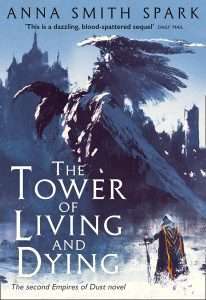 The Tower of Living and Dying is a masterpiece in gray morality as the charismatic Marith reveals details of his troubled past and pursues victory at all costs. Marith even terrifies himself as he discovers the evil within and awakens to his own tremendous powers.
The Tower of Living and Dying is a masterpiece in gray morality as the charismatic Marith reveals details of his troubled past and pursues victory at all costs. Marith even terrifies himself as he discovers the evil within and awakens to his own tremendous powers.
While Marith was the undisputed star of The Court of Broken Knives, Thalia steals the spotlight in The Tower of Living and Dying. The high priestess of Sorlost, chosen by God, flees her life of isolation to escape with Marith, wedding Marith while whetting her thirst for freedom.
Thalia is fully aware of the intrinsic dangers posed by Marith and of her own unique position to stop him. But her attraction to Marith proves too powerful to resist and is also intertwined with the lure of power.
Thalia’s internal struggles are set against the backdrop of growing war and changing allegiances in The Tower of Living and Dying. Anna Smith Spark never shies away from showing the brutal realities of war and its impact on personal lives.
Let’s face it, though, the raison d’être for reading The Tower of Living and Dying is to immerse yourself in Anna Smith Spark’s lyrical prose. No one writes like Anna Smith Spark. Her writing burns with emotional intensity, finding poetry in a world of violence and decay.
Anna Smith Spark elevates emotional wreckage to an art form in The Tower of Living and Dying, making it another must-read for grimdark fans.
Read our complete review here.
5. The House of SacrificeAnna Smith Spark’s Empires of Dust trilogy comes to its inevitable Shakespearean conclusion with The House of Sacrifice, a finale that reaffirms Marith as one of the greatest protagonists in grimdark fantasy.
Marith proves himself to be a ruinous king with a god complex, overrunning the continent with a seemingly undefeatable army. Marith sets his sights on the unconquerable city of Sorlost, the decaying capital of what had once been the greatest empire in the world, a conquest that had eluded even his notorious ancestor. At the same time, the greatest threat to Marith may come from within, as his unprecedented power is accompanied by a steady descent into madness.
The House of Sacrifice pivots on the tumultuous relationship between Marith and his wife, Thalia. Their relationship alternates between affection and a potentially murderous hatred, with intermittent flames of passion eclipsed by their more steadfast lust for power and glory.
Throughout The House of Sacrifice, Marith and Thalia leave a trail of death and destruction in their wake. As always, Anna Smith Spark is unflinching in her descriptions of gore and suffering. While Marith strives to maintain sanity, Thalia seeks to justify her choices that have led to so much slaughter.
Altogether, the Empires of Dust trilogy is a towering literary achievement and one of the finest works of grimdark fantasy. Anna Smith Spark’s inimitable prose elevates the genre to soaring new artistic heights. The House of Sacrifice is an uncompromising grimdark experience and literature of the highest caliber.
Read our complete review here.
6. A Sword of Bronze and AshesThe most challenging (and also the most rewarding) book in Anna Smith Spark’s canon of literature is A Sword of Bronze and Ashes, a lyrical dark fantasy that blends folk horror with the oral traditions of Welsh mythology. A Sword of Bronze and Ashes is a timeless epic dedicated to the universal trials of motherhood and the power of familial bonds.
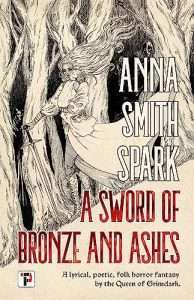 Now a mother with a loving husband (Dellet) and three daughters (Calian, Morna, and Sal), Kanda was once the bravest and strongest warrior of the legendary Six Swords of Roven. Kanda’s family knows nothing of her bloody past spent defending the realm against an unspeakable evil. But as the novel opens, her peaceful agrarian life is threatened by the return of this ancient wickedness.
Now a mother with a loving husband (Dellet) and three daughters (Calian, Morna, and Sal), Kanda was once the bravest and strongest warrior of the legendary Six Swords of Roven. Kanda’s family knows nothing of her bloody past spent defending the realm against an unspeakable evil. But as the novel opens, her peaceful agrarian life is threatened by the return of this ancient wickedness.
Shifting fluidly between first- and third-person narration, A Sword of Bronze and Ashes perfectly evokes the style of early folk tales recorded from oral tradition. The novel’s structure is particularly reminiscent of The Mabinogion, the earliest recorded prose stories from Wales, compiled in the twelfth and thirteenth centuries.
As in The Mabinogion, A Sword of Bronze and Ashes is permeated with natural mysticism. From the pastoral beauty of its opening chapter through its terrifying scenes of violence, Anna Smith Spark captures both the serenity and brutality of the natural world. Ultimately, A Sword of Bronze and Ashes is about appreciating the simple virtues of a peaceful family life in what is often a very dark world.
Anna Smith Spark weaves layers of complexity into her characterization and worldbuilding, enhancing the immersive experience for the reader and providing opportunities to discover more details upon subsequent reads. Although sometimes disorienting with its blurred line between life and death, everything becomes clear by the end of the novel, culminating with a mic drop King of Thorns-style ending that left me with mouth agape, shouting to my family about what a brilliant novel I had just read.
A Sword of Bronze and Ashes is a triumph in every respect. As always, Anna Smith Spark writes with lyrical beauty and frank brutality. Her latest novel is a technical tour de force, giving a faithful representation of early dark mystical fantasy passed down through oral tradition. But more importantly, A Sword of Bronze and Ashes is an emotional masterpiece, crushing me as only Anna Smith Spark can.
Read our complete review here.
7. Short StoriesAnna Smith Spark is also a prolific author of short stories. My favorite is “A Knight was Once Sent on a Quest by her Master,” which is published in Unbound II, Shawn Speakman’s collection of seventeen all-original short stories from leading authors across speculative fiction.
With “A Knight was Once Sent on a Quest by her Master,” Anna Smith Spark has crafted a touching fantasy about a knight, Erenan, with a physical disability that limits the use of her legs. I especially appreciated the loving relationship between Erenan and her horse: as she mounts the horse, they come together to make one unified being. Anna Smith Spark writes with a melancholic beauty and ends on a hopeful note that left me craving more.
Read our complete review of the Unbound II anthology here.
The post Anna Smith Spark: Where to Start Reading appeared first on Grimdark Magazine.
March 5, 2024
REVIEW: Venom & Vow by Anna-Marie McLemore and Elliot McLemore
I have long been a fan of Anna-Marie McLemore’s writing. Their work is haunting and lyrical, language as beautiful as the stories are impactful. In a bit of a change from their previous work, Venom & Vow is cowritten with their husband, Elliot McLemore. Venom & Vow is queer, incisive and full of murky morality. Deception is core to characters and plot – taking queer gender expression as a means to deceive as well as explore identity.
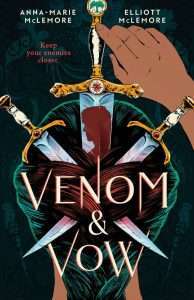 Not all is well in the world of Venom & Vow. Cade McKenna is a transgender prince, pretending to be his brother in public. Patrick McKenna is the unwilling heir to the throne, desperate to escape his duties. Valencia Palafox is a lady-in-waiting attending the future queen of Eliana – an enemy country. Gael Palma is an infamous assassin. Sounds like a lot of characters, but it breaks down to two – a transgender prince and a bigender assassin/lady. For the most part, the story progresses along expected paths. Patrick and Valencia meet in the heavily codified world of princes and crowns, while Cade and Gael meet under less expected circumstances. What Cade doesn’t know is that Gael and Valencia are indeed one person – and Cade stands in for Patrick in public. As the reader gets drawn into this world, cracks start to form in the world’s veneer. Gael has vowed to kill Patrick, come hell or high water, while Valencia plays at diplomacy – drawing in a political dimension and looking at how individuals can affect the fate of a society.
Not all is well in the world of Venom & Vow. Cade McKenna is a transgender prince, pretending to be his brother in public. Patrick McKenna is the unwilling heir to the throne, desperate to escape his duties. Valencia Palafox is a lady-in-waiting attending the future queen of Eliana – an enemy country. Gael Palma is an infamous assassin. Sounds like a lot of characters, but it breaks down to two – a transgender prince and a bigender assassin/lady. For the most part, the story progresses along expected paths. Patrick and Valencia meet in the heavily codified world of princes and crowns, while Cade and Gael meet under less expected circumstances. What Cade doesn’t know is that Gael and Valencia are indeed one person – and Cade stands in for Patrick in public. As the reader gets drawn into this world, cracks start to form in the world’s veneer. Gael has vowed to kill Patrick, come hell or high water, while Valencia plays at diplomacy – drawing in a political dimension and looking at how individuals can affect the fate of a society.
In some ways, Venom & Vow is less polished than McLemore’s previous work. The language isn’t quite as poetic – which makes sense, as this will automatically have a different voice as a co-authored novel. It is still beautifully written, but more utilitarian in tone. I’ve found much of their previous writing full of single sentences that stood out. Venom & Vow is more of a work to be taken as a whole. It is well paced and I found the narrative tension to work very well. I did struggle a bit to get into it, but once I was stuck in, I loved spending time with Cade, Valencia, Gael and Patrick.
And the tension and building relationship between the two main characters was a joy to read. Due to their positions and queer identities, they met as different people a few times, and all moments between them show their connection that goes beyond how they present. Queer identity is core to this rogue-and-royalty novel. Playing with identity along with deception works well in Venom & Vow, though I would have liked a bit more substance to the story itself. It’s a solid story, but one to read for characters more than plot.
Read Venom and Vow by Anna-Marie McLemore and Elliot McLemoreThe post REVIEW: Venom & Vow by Anna-Marie McLemore and Elliot McLemore appeared first on Grimdark Magazine.
March 4, 2024
REVIEW: Through Dreams So Dark by Angela Boord
Through Dreams So Dark is a dark portal fantasy by Angela Boord that hearkens back to some of the great classics of Russian literature in both its story and its epic scope.
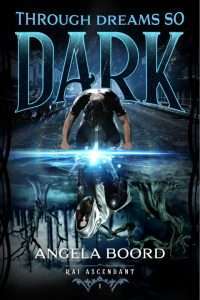 Through Dreams So Dark begins in our own world in the 1980s as we are introduced to the lead protagonist, Sergei Preobrazhensky, a young man from a Russian émigré family now living in the American Midwest. Sergei’s mother is missing and presumed dead after helping her family flee across the Iron Curtain.
Through Dreams So Dark begins in our own world in the 1980s as we are introduced to the lead protagonist, Sergei Preobrazhensky, a young man from a Russian émigré family now living in the American Midwest. Sergei’s mother is missing and presumed dead after helping her family flee across the Iron Curtain.
Plagued by bizarre hyper-realistic dreams, Sergei is determined to understand his family’s past and find closure with respect to his missing mother. Sergei is helped by his best friend and college roommate, Cameron, and an excellent cast of supporting characters as they discover a portal called the Lake which leads to a parallel fantasy world.
On the other side of the portal, Sergei and friends discover a dark fantasy world with warring tribes and contentious magic. Connections between the parallel worlds develop slowly over the course of the book, with plenty of unexpected twists along the way.
Angela Boord’s prose is compulsively readable, blending a 1980s Stranger Things vibe with a Bulgakovian sense of humor. The beginning of the book is perfectly executed, including some incisive humor that made me laugh out loud:
“At first, I cursed at him in Russian, because I’m polite like that. After I got to know him, I still cursed in Russian, but I used his name so he’d know I was cursing him.”
However, the rest of the book carries on for Tolstoyan lengths, which slowly sapped away my enjoyment of the story. At nearly 900 pages, Through Dreams So Dark would benefit from some significant cuts to tighten up its plot and pacing.
My favorite part of Through Dreams So Dark are the subtle nods to classic Russian literature. For example, Sergei’s family name, Preobrazhensky, is taken from famed Russian author Mikhail Bulgakov’s Soviet-era novella, Heart of a Dog, a biting takedown of the Communist party’s embrace of eugenics.
Angela Boord echoes a similar theme in Through Dreams So Dark, which features a potential Soviet conspiracy involving eugenics-tinged laboratory experiments. She pairs this with the enduring Russian émigré experience, a staple in Vladimir Nabokov’s canon of literature.
Through Dreams So Dark is recommended for fans of classic Russian literature and for anyone who enjoys a well-written portal fantasy. I originally reviewed Through Dreams So Dark as part of the Before We Go Blog team for SPFBO9.
Read Through Dreams So Dark by Angela BoordThe post REVIEW: Through Dreams So Dark by Angela Boord appeared first on Grimdark Magazine.
March 3, 2024
REVIEW: River of Teeth by Sarah Gailey
In Sarah Gailey’s River of Teeth a crew of badarses try to clean out an artificial marshland packed to the shores with thousands of wild hippos for a big fat pay check. For the benefit of the reader, this is not a simple a story as that sounds, and the characters and their histories and goals turn this into a bloody quagmire of twists and turns, betrayals and bloody deaths–and a little bit of romance on the side.
Our protagonist in River of Teeth, Hounds Tooth, has a job from the government with enough money as pay that he can go buy a parcel of marshland for he and his hippo and settle down. He’s not doing it for government, or the people. He is kind of doing it for the money. And he is definitely doing it for the revenge. And he’ll be doing it astride a 3,000 pound hippo.
To complete his mission, Hounds Tooth needs a crew. Much like Daniel Polansky’s The Builders, River of Teeth has an absolutely lovable cast of ne’er do wells brought together to embark on a caper (operation). I don’t know why I love it when authors write about a group of badarses who hurt people put together to achieve a thing that might kill them and / or a bunch of other people, and there are traitors and scores to be settled amongst them (let alone with their enemies), but it is my sweet spot at the moment. In this crew we have a demo expert, a French conwoman, the most dangerous killer to have ever lived (who is also pregnant), and the fastest gun in the land. All with their own hippos and problems and agendas.
Gailey packs a lot into River of Teeth. On top of a brilliant cast and a barnstorming storyline, the author has created an alternate history in the deep south of the US–a world where hippos were brought into the States as a food source (which, according to the author’s foreward, was very nearly an actual thing at one point!). Some went feral, took over a major swamp owned by a nasty piece of work named Travers who used them as garbage disposal for those who needed removing from his floating casinos, bred like crazy for a few generations, and created an excellent ongoing big bad for our story to play out against.
This is my second time reading River of Teeth, and I absolutely loved it. There is plenty to love here for the grimdark fan: morally grey characters, conflicting points of view, plenty of personal flaws on display, competing goals and some serious scores to settle–and that’s just amongst the crew we follow through the story. River of Teeth is just bloody brilliant reading; just an awesome way to spend a few hours in the imagination of a magnificent fantasy story teller.
Read River of Teeth by Sarah GaileyThe post REVIEW: River of Teeth by Sarah Gailey appeared first on Grimdark Magazine.

 Read on Amazon
Read on Amazon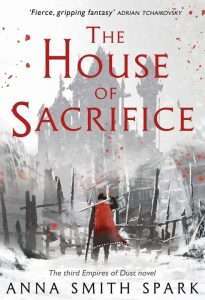
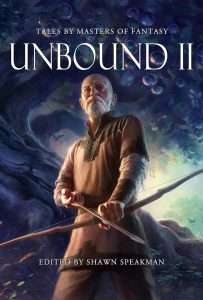 Read on Amazon
Read on Amazon